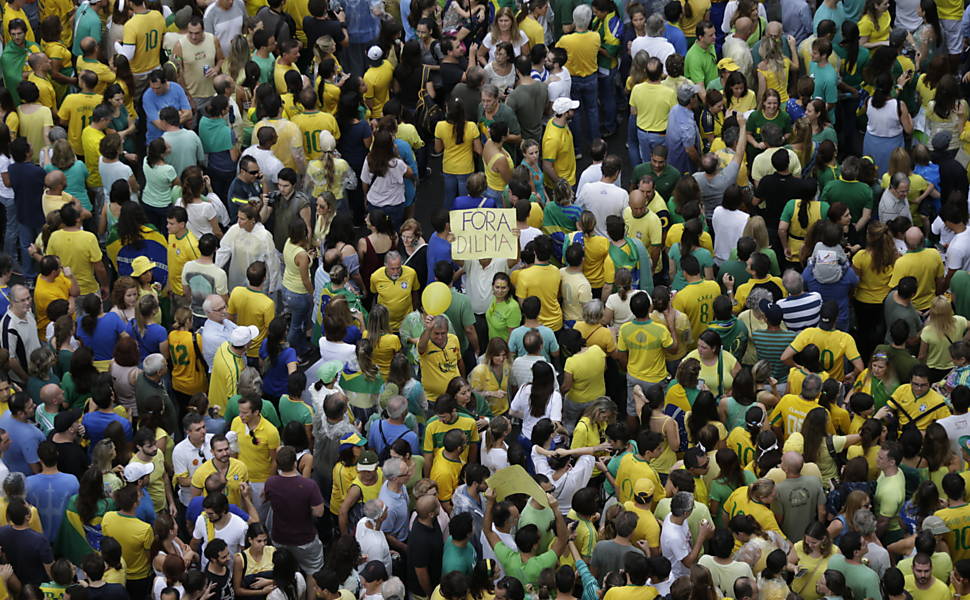Latest Photo Galleries
Brazilian Markets
17h31 Bovespa |
-1,12% | 125.924 |
16h43 Gold |
0,00% | 117 |
17h00 Dollar |
+1,50% | 5,1920 |
16h30 Euro |
+0,49% | 2,65250 |
ADVERTISING
Nearly One Million People Protest Against the Government in Brazil
03/16/2015 - 09h06
Advertising
FROM SÃO PAULO
The protests that occurred on Sunday, March 15, against the government of President Dilma Rousseff and her party, the PT, mobilized nearly one million people in all of the country's capitals and some of the interior cities.
The protests took place in at least 151 Brazilian cities and were peaceful for the most part - no violent confrontations between those in favor of and against the government were registered.
The biggest protests occurred on Paulista Avenue in São Paulo, where 210,000 people gathered throughout the day in spite of the intermittent rain that fell. Datafolha says that at its high point, the protest, called by five different groups, had 188 thousand protesters at 4:00 pm.
The state police department calculated there were one million protesters. It said it used airborne photographs and the extension of the avenue and other streets for the calculation.
The protesters' main demand was the impeachment of President Rousseff – they also accused the PT of being responsible for the corruption scandal of Petrobras.
Signs mentioning the Car Wash Operation - which is investigating the embezzlement of billions of reals at Petrobras and the payment of bribes to members of the PT, PMDB, PP, PSB, PSDB and PTB - were seen around the sound trucks of groups such as MBL (Movimento Brasil Livre), Vem pra Rua, Revoltados Online and Partido Solidariedade.
The SOS Forças Armadas movement also was on Paulista Avenue with three sound trucks and many signs that urged military intervention. "Fools want impeachment, patriots demand constitutional intervention," one of the signs read.
In isolated incidents, 20 members of the nationalist group Carecas do Subúrbio (Suburban Skinheads) were caught with explosives after a couple was hit by a rocket. No one was injured. The police said two other people were arrested for pick-pocketing and stealing mobile phones.
In Rio de Janeiro, the biggest protest occurred in the morning on the seafront in Copacabana, where 15,000 protestors closed Atlântica Avenue, according to Military Police figures. At the end of the day, the Military Police command refused to give an official estimate. Organizers say at least 50,000 people attended the event.
In Brasília, 40,000 people gathered on the Esplanada dos Ministérios in front of the National Congress in the morning, according to the Military Police.
Protests with thousands of people also took place in states where President Rousseff won the 2014 election, such as Minas Gerais, Bahia and Pernambuco.
Aécio Neves, the opposing candidate defeated by Rousseff in the second round of the election, didn't attend the protests and recorded a video in his apartment in Rio de Janeiro. Neves said that March 15 will be remembered as the "day of democracy" in Brazil and asked the population not to "disperse."
Translated by THOMAS MUELLO




